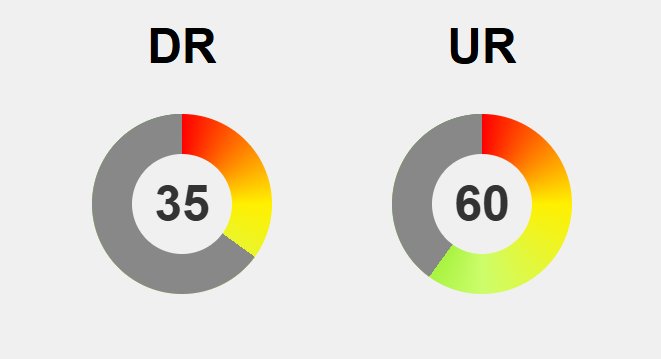Is intelligence dictated more by our DNA or shaped by the environment? This compelling exploration delves into the complex interplay between innate potential and life experiences, using the fictional character Sheldon Cooper as a vivid example. Sheldon’s extraordinary IQ contrasts sharply with his social struggles, illustrating that high cognitive ability doesn’t automatically ensure emotional or social mastery. Scientific research, including twin studies, suggests genetics contribute up to 80% of intelligence, but environment—education, social interactions, and nurturing circumstances—significantly influences how potential manifests. This nuanced perspective reveals that intelligence is a dynamic spectrum, continuously molded by both biological inheritance and external influences. As neuroscience advances, our understanding deepens, highlighting the importance of supportive environments in unlocking innate talents. The key question remains: can effort and opportunity transform genetic blueprints into real-world strengths? Embracing this synergy offers a hopeful, inclusive vision where growth and resilience are accessible to all, challenging fixed notions of innate ability.
Unraveling the Mystery: Nature Versus Nurture in Shaping Intelligence
The question of what truly shapes our intelligence—whether it’s written into our genes or molded by our environment—has been a topic of debate for decades. Some experts argue that our genetic makeup largely determines how smart we are, pointing to studies showing that IQ tends to run in families and that identical twins raised apart often have remarkably similar scores. Others emphasize the importance of life experiences, education, and social surroundings in developing cognitive abilities. This ongoing discussion isn’t just academic; it influences how we approach learning, personal growth, and even social policies.
To understand this complex interplay, it helps to consider characters like Sheldon Cooper from *The Big Bang Theory*. Sheldon is portrayed as a genius with an IQ likely above 160, excelling in scientific reasoning and problem-solving. Yet, he struggles with social cues and emotional understanding. His character shows that intelligence isn’t just one thing—genetics may give the potential, but how that potential manifests depends heavily on environment, experiences, and personal development. Sheldon’s social challenges highlight that cognitive ability is only part of what makes a person well-rounded; emotional intelligence and social skills often develop separately.
Historically, psychologists have debated whether intelligence is inherited or shaped by environment. Early thinkers like Francis Galton believed genes played the dominant role, while behaviorists argued that learning and experience were key. Modern research, especially twin and adoption studies, suggests it’s a mix of both. Genetics can account for a significant portion of individual differences, but environmental factors like education, nutrition, and social interaction are equally crucial in turning potential into actual ability.
This debate isn’t about choosing one side over the other but recognizing that both factors are intertwined. Our DNA provides a blueprint for our potential, but environment acts as the builder, shaping how that potential develops. Neural plasticity allows the brain to adapt based on experiences, meaning growth is ongoing and flexible. A stimulating environment can unlock talents, while neglect or limited resources can hold someone back, regardless of their innate ability.
Considering Sheldon’s character reminds us that high intelligence doesn’t automatically lead to social ease or emotional understanding. Conversely, someone with average IQ can excel socially and emotionally through nurturing experiences. This distinction underscores that intelligence isn’t a single trait but a collection of skills that can develop independently. Genetics may set the starting line, but the race is won through a combination of environment, effort, and opportunity.
In the end, understanding the balance between genetics and environment helps us appreciate that human intelligence is dynamic and multifaceted. It’s not about a fixed trait but a spectrum shaped continuously by both our biological inheritance and the experiences we encounter. Recognizing this interplay encourages a more compassionate view of personal development, one that values effort and environment just as much as innate talent.
The Genetic Blueprint of Intelligence: Evidence and Insights
Genetics play a significant role in shaping our cognitive abilities, and scientific research consistently supports this idea. Twin studies, especially those involving identical twins raised apart, are among the most revealing. These twins share nearly all their DNA, yet they often have remarkably similar IQ scores despite growing up in different environments. Such findings suggest that genetics can explain roughly 50% to 80% of the variation in intelligence within a population, highlighting the strong biological component involved.
Genes influence brain development in many ways, from determining the size and connectivity of neural networks to affecting processing speed and reasoning skills. Specific genetic variations have been linked to traits associated with intelligence, such as memory capacity and problem-solving abilities. Advances in genomics are beginning to identify these influences more precisely, offering clearer insights into how our DNA shapes cognitive functions. However, genetic predispositions are just one piece of a larger puzzle.
While genes set the foundation, they do not dictate a fixed level of intelligence. Brain development is a lifelong process, and neural plasticity allows the brain to adapt based on experiences. A person may inherit a genetic tendency for strong reasoning, but without proper education or stimulating environments, that potential might not be fully realized. Conversely, individuals with fewer innate advantages can still develop impressive skills through effort, practice, and learning, demonstrating that genetics provide a starting point rather than a final destination.
Environmental factors also modulate genetic influences, often amplifying or restricting their effects. Nutrition, education, social interactions, and exposure to diverse challenges all interact with our genetic makeup. For example, a child with a genetic propensity for strong memory can significantly improve that ability through targeted training, while limited resources might hamper someone with innate potential. This interplay shows that intelligence results from a dynamic relationship between inherited traits and external influences.
Understanding the genetic contribution to intelligence underscores that innate potential exists but is not deterministic. It emphasizes that environmental opportunities and personal effort are crucial in transforming genetic possibilities into real-world skills. Recognizing this balance encourages a view of intelligence as a flexible trait—one shaped by both our biological blueprint and the experiences that build upon it.
Environmental Forces Shaping Cognitive Growth and Social Skills
Environmental factors shape our intelligence and social skills from the moment we are born, playing a vital role in how our brains develop and adapt over time. A stimulating environment—one filled with books, conversations, and encouragement—can significantly boost language abilities, curiosity, and problem-solving skills. Conversely, neglectful or resource-poor settings can hinder cognitive growth, making it harder for individuals to reach their full potential. The quality of early experiences sets the foundation for future learning, highlighting how crucial nurturing surroundings are in fostering intelligence.
Social interactions are just as influential in developing emotional intelligence. Engaging regularly with family, friends, and peers teaches empathy, cooperation, and emotional regulation—qualities essential for success both personally and professionally. For example, children raised in supportive environments tend to better understand their own feelings and respond more effectively to others. These skills don’t develop automatically with high IQ; they flourish through exposure to diverse perspectives and meaningful social bonds, emphasizing the importance of a nurturing social environment.
Sheldon Cooper from *The Big Bang Theory* exemplifies how high cognitive ability can exist alongside social struggles. Despite his extraordinary intellect, Sheldon finds it challenging to interpret social cues and navigate emotional landscapes. This contrast underscores that intelligence isn’t solely about raw mental capacity—social and emotional skills often require deliberate cultivation. It reminds us that a well-rounded person benefits from both intellectual stimulation and emotionally supportive environments, which shape different facets of human development.
The environment also influences brain growth through exposure to varied stimuli. Homes and schools rich in challenges and resources foster neural connections, enhancing reasoning, language, and creativity. Conversely, limited exposure to intellectually stimulating activities or social engagement can restrict development. Children with access to books, engaging conversations, and diverse experiences tend to develop stronger cognitive and social skills, while lack of such opportunities can leave potential untapped.
While genetics provide the blueprint for our capacities, environment acts as the architect—building, shaping, and sometimes limiting how that potential is realized. Neural plasticity allows the brain to rewire and adapt based on experiences, meaning growth isn’t fixed at birth. Facing challenges, practicing skills, and forming social bonds actively influence neural pathways, demonstrating that personal development depends heavily on ongoing interactions with our surroundings.
Our growth isn’t predetermined; it’s a dynamic process influenced by the environments we inhabit. Supportive, enriching spaces unlock talents that might remain dormant otherwise. By fostering curiosity, resilience, and social-emotional skills, we create conditions where innate abilities can flourish. Recognizing the power of environment encourages us to invest in nurturing spaces, ensuring that everyone has the opportunity to develop a well-rounded, resilient mind.
Creating such enriching environments is essential, and resources like educational websites can be valuable tools in this process. For those interested in supporting cognitive and social development, exploring effective strategies can make a significant difference. To learn more about fostering these skills, visit this helpful resource on educational development.
The Dynamic Dance of Genes and Environment in Personal Development
Genetics and environment work hand in hand to shape our intelligence and personal growth. Our DNA provides the foundation—setting potential strengths and tendencies—while life experiences, education, and social interactions build upon that base. A child with a genetic predisposition for strong reasoning won’t reach their full potential without access to stimulating environments and learning opportunities. Conversely, someone with fewer innate advantages can still develop impressive abilities through effort, practice, and exposure to diverse challenges. This ongoing interaction between inherited traits and external influences constantly influences who we become.
This relationship isn’t static; it’s dynamic and adaptable. Supportive environments can amplify natural talents, helping individuals excel in areas aligned with their strengths. At the same time, adverse conditions like neglect or limited resources can suppress even the most promising innate abilities. Brain plasticity plays a crucial role here, allowing neural pathways to rewire and adapt based on experiences. Learning new skills, forming social bonds, and facing challenges actively shape the brain’s structure, making growth a continuous process rather than a fixed outcome at birth.
A person with a genetic edge in memory might improve that skill significantly through targeted training and education. Meanwhile, a child with fewer innate advantages can outperform expectations when placed in environments rich with resources and encouragement. This highlights that potential isn’t predetermined; it’s molded by the opportunities we encounter and the effort we invest. Effort, perseverance, and access to meaningful experiences often push us beyond initial limitations, emphasizing that intelligence is flexible and multifaceted.
The synergy between genetics and environment underscores that personal development is an ongoing journey. Our genes set the starting point, but it’s the interactions with our surroundings that determine how far we go. When nurturing environments and a growth mindset are combined, individuals often unlock talents they might not have initially appeared capable of. This perspective encourages creating spaces where diverse skills and emotional strengths can thrive, transforming innate potential into real-world ability.
Seeing intelligence as a product of both biology and experience shifts our approach to education, careers, and social policies. It promotes a view of growth and effort as essential, rather than fixed traits. By investing in supportive environments and fostering resilience and curiosity, we give everyone a chance to reach their full potential. Recognizing this interplay inspires us to build communities that nurture talents and empower continuous development, making the full spectrum of human ability accessible to all.
Looking Ahead: The Future of Understanding Human Intelligence
As we look toward the future, our understanding of intelligence continues to grow more nuanced, revealing its deeply multifaceted nature. The idea that a single factor—either genetics or environment—can fully explain what makes someone smart is becoming increasingly outdated. Instead, we see intelligence as the result of ongoing interactions between inherited traits and life experiences, each shaping and reshaping our abilities over time. This perspective encourages us to value both biological predispositions and the power of personal growth equally.
Emerging advancements in genetics and neuroscience promise to deepen our insights into how specific genes influence different aspects of intelligence. Meanwhile, research on brain plasticity reinforces the idea that our mental capacities are malleable throughout life. These discoveries open the door to personalized learning approaches, tailored to individual strengths and needs, which could help bridge social gaps and provide more equitable opportunities for development.
At the same time, ethical considerations grow more pressing as scientific capabilities expand. The potential to identify genetic influences on intelligence raises questions about privacy, fairness, and misuse. Ensuring responsible use of these tools is essential to fostering a society that values diversity and recognizes that nurturing environments are just as critical as biological factors. Promoting inclusivity and equal access remains central as we translate scientific progress into tangible benefits for all.
Investing in enriching environments and equitable resources can amplify innate talents and support lifelong development. Policies that prioritize curiosity, resilience, and social-emotional skills create more adaptable individuals, better prepared to navigate a changing world. When effort and opportunity are combined, people often surpass initial expectations, emphasizing that growth isn’t fixed by genetics alone but cultivated through supportive conditions.
Reconsidering intelligence as a dynamic, adaptable trait shifts how we approach education, careers, and social policies. Emphasizing growth and effort over fixed ability opens pathways for motivation and self-improvement. It reminds us that talents can be nurtured, and potential unlocked, through dedication and the right environment. This outlook fosters a more inclusive and optimistic view of human capacity, where everyone has the chance to flourish.
Ultimately, embracing the complex dance between nature and nurture invites us to move beyond simplistic labels and stereotypes. It underscores that each person’s abilities are a unique blend of inherited traits and personal choices. Creating environments that foster curiosity, emotional resilience, and continuous learning empowers individuals to reach their full potential. This perspective inspires us to build communities that celebrate growth, diversity, and the remarkable adaptability of the human mind.






